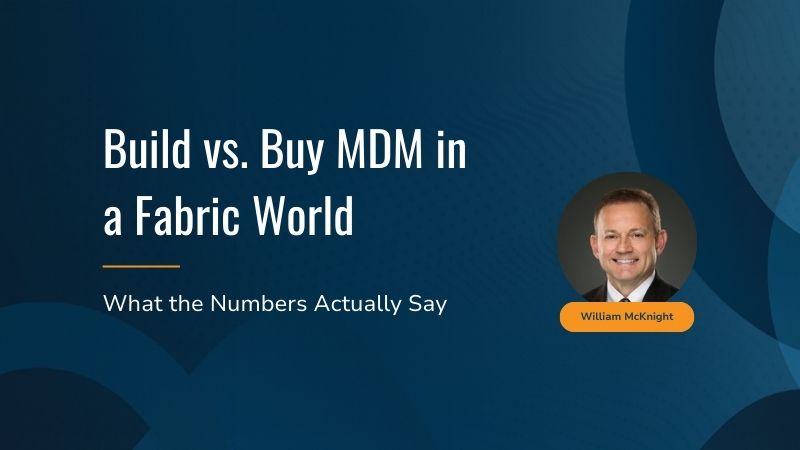Master Data Management is a two-part data management strategy used by organizations of every size in every industry. It includes:
1. specific business processes combined with
2. the technical infrastructure required to provide and maintain consistent and accurate sets of master data.
Master data consists of the information and relationships among the information that are key to the core operations of a business. In other words those key areas, departments, locations and things that are important to understand, document
and measure.
Sometimes, we vendors in the data management world can make
the easy complicated.
But master data is important to everyone NO MATTER the size of your organization. After all, everyone needs to understand:
- People and Parties you do business with –
- Customers,
- Vendors and
- Employees.
- Locations you do business in –
- Branches,
- Stores,
- Offices,
- Cost/Vendor Centers for Finance.
- Channels you do business by –
- Vendor,
- Web/Ecommerce,
- Retail,
- Social.
- Things you sell, make, interact with and manage –
- Products,
- Contracts,
- Accounts,
- Assets.
Master data management is FOR the business, often implemented BY and WITH a team from IT.
Virtually every executive knows the importance of having high-quality data that can be trusted for making decisions, many admit their organizations are not taking the most critical steps to ensure that happens — like implementing master data management — according to a 2021 survey by Harvard Business Review Analytics Services.
The biggest worries we hear from customers and prospects are it’s:
- Too hard
- Too expensive
- Too time consuming
- What we have is good enough…
We will talk about the worries and pitfalls in another post, but think about it for a minute…do you trust the data you are using to make business decisions? Like, deep down, in your gut, do you KNOW, it’s right and tells the complete picture?
If not, or if there is any doubt, then you owe it to yourself to keep researching master data management and how it can truly transform your business.
Every IT project should support the business by either helping to:
- Increase Revenue,
- Reduce Cost, or
- Increase Ability to Collect Cash Faster
Build your business case today, read 9 Steps to Getting Started with MDM.

Eric Melcher
Eric has spent the entirety of his 15+ year career working in the enterprise information management space. As Chief Technology Officer, Eric is responsible for all aspects of product management, development and support for Profisee’s software portfolio.











